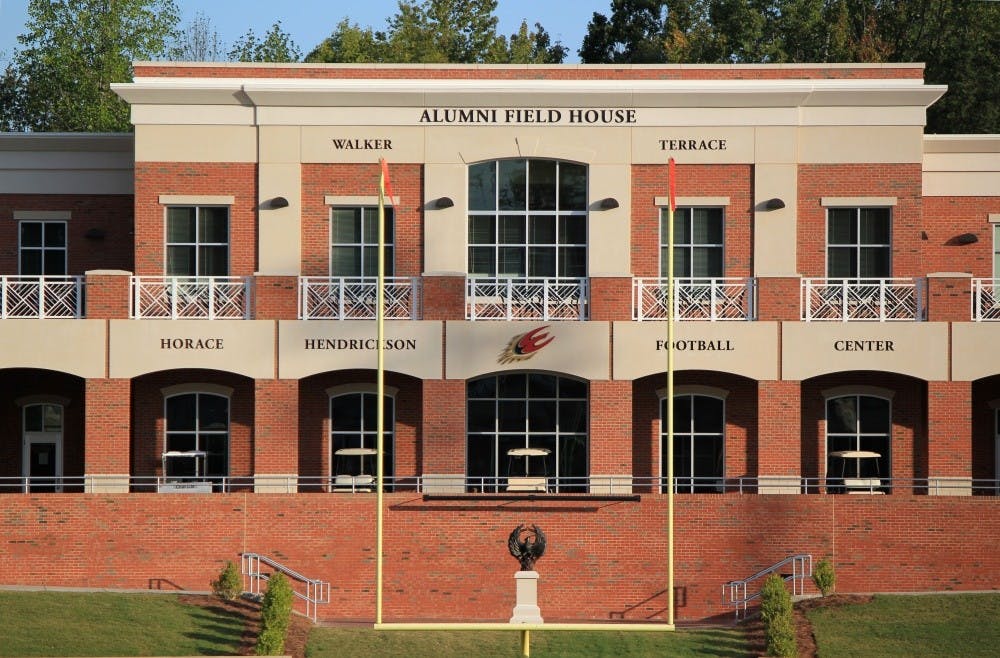The new Alumni Field House was recently recognized for being LEED Gold certified, a benchmark for the design, construction and operation of high- performance green buildings. LEED stands for Leadership in Energy and Environmental Design.
There are four levels of LEED certification: Certified, Silver, Gold and Platinum.
The levels correspond to the number of credits acquired in five green design categories: sustainable sites, water efficiency, energy and atmosphere, materials and resources and indoor environmental quality.
The Alumni Field House is 37 percent more energy efficient than a building that meets the standard energy code according to Elaine Durr, Director of Sustainability at Elon University.
There are not any specific benefits that accompany the recognition, said Brad Moore, associate director of planning, design and construction management.
But LEED-certified buildings are designed and built to be more energy efficient, more water efficient and more durable than typical structures so they are less expensive to operate and maintain.
"Research has proven that users of environmentally friendly buildings are happier and more productive than (those in) typical buildings because LEED-certified buildings typically provide more natural light, more views to the exterior and more control of their working environment," Moore said.
Lindner Hall was the first LEED-accredited building on Elon's campus. It received Gold recognition in 2009.
Elon has adopted a Green Building Policy meaning future construction projects consisting of 8,000 or more square feet of conditioned, occupied space will achieve LEED certification.
The Elon University Sustainability Master Plan has as a goal that all future buildings must at least be LEED Silver certified, Moore said.
"Colonnades C, D and E and the new Greek houses were just constructed," he said. "We are waiting for the LEED certification."
The Global Dining Hall and the Station at Mill Point, both currently under construction, were both designed using LEED guidelines, Moore said.
As another part of being sustainable, for the last several years local companies have diverted much of the construction and demolition waste from the landfill by taking Elon's unsorted dumpsters and separating out all materials that can be recycled.
During construction of the Alumni Field House, 90 percent of the construction waste was recycled or reused.
This is also the precedent that was used with the now- demolished dorms in North Area. Elon tries to reuse and recycle as much of the materials as it can, Moore said.
"Physical Plant salvaged items like locks, air conditioners, plumbing fixtures and sidewalk lights," he said. "Habitat for Humanity removed the majority of the furniture for reuse. We salvaged several hundred bricks for various groups on campus, and finally the general contractor salvaged the metal and bricks during the demolition process."


